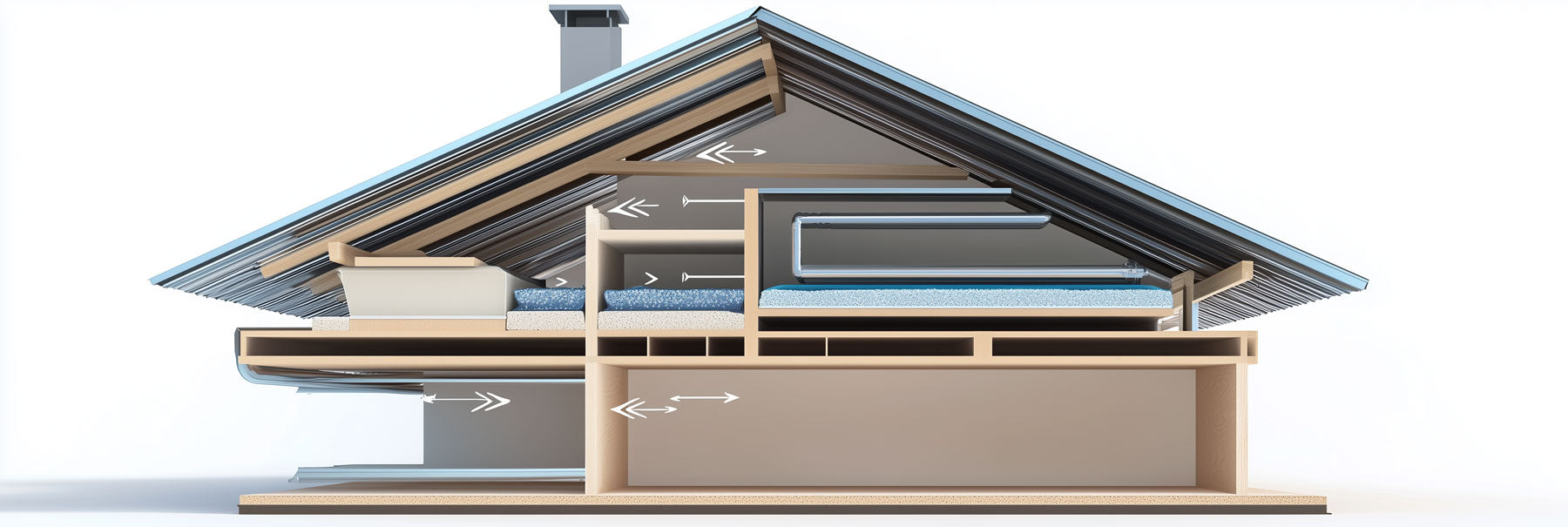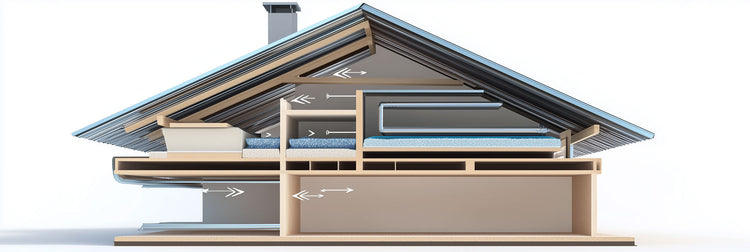Metal Roofing and Moisture: Complete Guide for Homeowners
Metal roofing has earned a reputation for its exceptional performance in various climates, particularly when it comes to handling moisture. This comprehensive guide delves into the relationship between metal roofing and moisture, exploring how metal roofs effectively protect against water damage, the different types of metal roofing materials, and essential maintenance tips to ensure long-lasting protection.
How Metal Roofing Protects Against Moisture
Unlike traditional asphalt shingles that can absorb water and become susceptible to damage, metal roofing offers superior protection against moisture. This is due to several key factors:
- Interlocking Panels: Metal roof panels are designed to interlock seamlessly, creating a watertight barrier that prevents water penetration.
- Durable Finishes: Metal roofs are typically coated with protective finishes that resist corrosion and prevent water from seeping through.
- Slope and Drainage: Properly installed metal roofs have a sufficient slope to facilitate efficient water runoff, preventing water accumulation.
- No Water Absorption: Metal roofing materials do not absorb water, unlike asphalt shingles, which can become saturated and deteriorate over time.
Types of Metal Roofing Materials
A variety of metal roofing materials are available, each with unique properties and benefits:
Steel
- Affordable and durable: Steel is a popular choice for its strength and cost-effectiveness.
- Variety of gauges and coatings: Available in different thicknesses and protective coatings to enhance corrosion resistance.
Aluminum
- Lightweight and rust-resistant: Ideal for coastal regions or areas with high humidity.
- Environmentally friendly: Often made from recycled materials and recyclable at the end of its life.
Copper
- Distinctive appearance and longevity: Develops a beautiful patina over time.
- Premium material: Offers exceptional corrosion resistance and a long lifespan.
Zinc
- Highly corrosion-resistant: Requires minimal maintenance.
- Unique weathered look: Provides a distinctive aesthetic appeal.
Tin
- Traditional aesthetic: Offers a classic look reminiscent of historical buildings.
- Durable and long-lasting: Provides excellent protection against the elements.
Signs of Moisture Damage on a Metal Roof
Early detection of moisture damage is crucial to prevent costly repairs. Watch out for these signs:
- Rust or corrosion: Look for reddish-brown stains or discoloration on the metal panels.
- Water stains: Check for dark spots or streaks on ceilings or walls inside your home.
- Mold or mildew growth: Moisture can create a breeding ground for mold and mildew.
- Peeling paint or blistering: Moisture can cause the protective coating to deteriorate.
- Sagging or drooping: Uneven areas or sagging can indicate structural damage due to moisture.
Preventing Moisture Damage on a Metal Roof
- Proper Installation: Hire a qualified roofing contractor to ensure your metal roof is installed correctly with proper sealing and flashing.
- Regular Inspections: Inspect your roof at least twice a year, especially after severe weather, to identify any signs of damage or potential leaks.
-
Maintenance:
- Keep your roof clean and free of debris.
- Ensure gutters and downspouts are clear and functioning correctly.
- Trim overhanging branches that could scratch or damage the roof.
Benefits of Metal Roofing for Moisture Protection
- Durability: Metal roofs can withstand harsh weather conditions and resist moisture damage.
- Longevity: Enjoy a long-lasting roof that requires minimal maintenance.
- Waterproofing: The interlocking panels and protective coatings create a watertight barrier.
- Energy Efficiency: Metal roofs can reflect sunlight, reducing heat buildup and minimizing the risk of condensation.
Metal Roofing vs. Other Materials
Metal roofing outperforms traditional materials like asphalt shingles in terms of moisture protection:
- Superior water resistance: Prevents water penetration and damage.
- Greater durability: Resists rotting, warping, and mold growth.
- Longer lifespan: Reduces the need for frequent replacements.
- Non-porous surface: Does not absorb water, preventing moisture-related issues.
Frequently Asked Questions
What causes condensation under a metal roof?
Condensation occurs when warm, moist air comes into contact with a cold surface, like the underside of a metal roof.
How can I prevent condensation?
Proper insulation and ventilation are essential to prevent condensation.
Do I need a vapor barrier with a metal roof?
Yes, a vapor barrier helps control moisture and prevent condensation.
By understanding the factors that contribute to moisture damage and implementing preventive measures, you can ensure your metal roof provides long-lasting protection and enhances the longevity of your home.

